Ten recommended exhibitions from PHotoEspaña 2025

Spain's leading photography festival, PHotoEspaña , is now in its 28th edition, featuring around 100 exhibitions. Under the cryptic motto " After All ," the event, directed by María Santoyo and sponsored by the cultural organization La Fábrica, explores the paths in which the image on paper displayed in a frame and hung on a wall ("hyper-coded verticality," as some theorists might say) no longer takes center stage, but rather other media and materials are taking over to renew photography.
This edition runs until September 14th and aims to vindicate "the power of photography as a tool of dissent, resistance, and an agent of change," no less. The exhibition features work by 360 artists, 60% of them Spanish; 48% of the total are women. The budget is around €1,170,000, of which 71% is private funding, according to the organizers. Some 50 public and private stakeholders are collaborating. Here is a list of some of the most interesting exhibitions, from a less brilliant edition, as discussed in the circles surrounding the presentations. Note: the order is not based on preference.
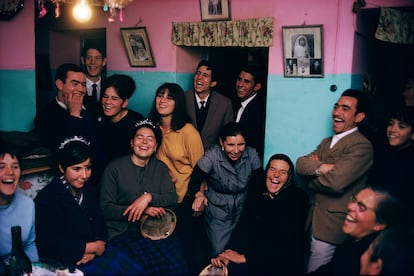
1. 'Europe 1966-1967', by Joel Meyerowitz. Fernán Gómez. Madrid Cultural Center, until July 16.
Joel Meyerowitz (New York, 1938) is a legend of color photography.This exhibition chronicles the road trip he took in the 1960s, at the age of 26, to visit several European cities, including Málaga, where he befriended a family of flamenco dancers. Meyerowitz had then decided to put aside his career as an advertising executive to try his hand at photography. He traveled more than 30,000 kilometers across 10 countries and took some 25,000 images. This exhibition is that of a budding photographer, and therefore not the best of his work. However, his fondness for capturing absurd moments, of anonymous people in everyday situations on the street, is already evident. Thanks to the enormous space that is the Fernán Gómez, his large-format prints are on display.
2.- 'Photography and Drawings, by Dora Maar'. Lázaro Galdiano Museum, until September 14.
A gem of this PHotoEspaña exhibition, organized by the Loewe Foundation , are the rarely seen photographs and drawings, some previously unpublished, by the Parisian surrealist Dora Maar, Henriette Théodora Markovitch . The images are from a report she made on Barcelona in the 1930s and have only recently become known. Dora Maar had only begun taking photographs a few years earlier, interested in experimenting with the new techniques brought about by the avant-garde movements. Thus, she photographed artists and received advertising and fashion commissions. Here we see gypsies, street children, blind people... figures she showed a predilection for. In addition, there are the small drawings, sometimes figurative and abstract strokes, that she made on pages of diaries or notebooks.
3.- 'After All. Photography in the Helga de Alvear Collection.' Serrería Belga Cultural Space, until July 27.
An exhibition with a melancholic aftertaste due to the death, last February, of the collector and gallery owner Helga de Alvear , a key figure in Spanish art in recent decades. This is also because some of the images depict buildings being demolished and disused industrial facilities. These are the images taken by the famous Bernd and Hilla Becher and their disciples of the so-called Düsseldorf School during the second half of the 20th century. This exhibition began while de Alvear was still alive and is composed of around 40 images, from the nearly 1,000 in her art collection, a total of 3,000 pieces. After all, this is also the motto of this year's PHotoEspaña, taken as a moment of transformation, of change, although it's not entirely clear where it's leading. A somewhat ethereal explanation, indeed.

4.- 'On the Landscape', by José Guerrero. Mapfre Foundation, Madrid, until August 24.
Granada-born photographer José Guerrero also reflects on the landscape intervened by humankind in what is, in his words, his "most important exhibition." The exhibition covers several series from the last two decades, which reveal his evolution from documentary to abstract. With a montage largely of diptychs and polyptychs, we see horizons, solitary houses in the drylands of La Mancha, Monument Valley, and Carrara; until we reach his large-format photos of the Sierra Nevada, in which the snowy slopes become paint stains. It's a vision that moves away from the pretty, human-free postcard. Finally, we see his experimental images, in which he plays with volumes and colors using models he built himself.
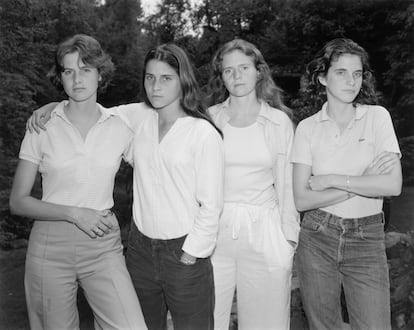
Mapfre has also recovered the famous seriesThe Brown Sisters , by Nicholas Nixon . A document about the passage of time and the transience of life that began as a game. Nixon decided to portray his wife, Bebe, alongside her three sisters for the first time in 1975, and that diversion became a tradition, year after year, always in black and white and with the sisters placed in the same order. The series was previously exhibited here in 2016, and now the final images of this memento mori have been added, in which we contemplate from the thriving youth to the maturity that brings the final moment closer. For this reason, its protagonists decided to close the series in 2022, before any of the sisters were missing.
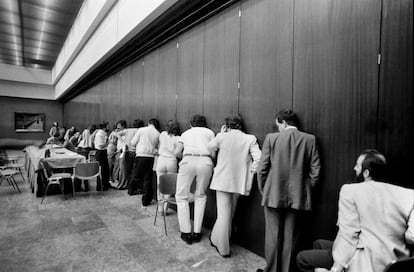
5.- 'A Time to Look (1970-2020)', by Marisa Flórez. Canal de Isabel II Hall, until July 10.
Marisa Flórez (León, 1948) is the great photographer of the Spanish Transition, above all because she offered a fresh look at the post-Franco political class. The exhibition covers half a century of her career through 185 images. However, it is not an exhibition about the politicians of the time, but rather delves into other topics, such as culture, the Royal Family, prison life, demonstrations... Flórez worked at EL PAÍS between 1976 and 2012, first as a photojournalist and later as editor-in-chief and photo editor. Along with the strength of her images, it is worth highlighting the exhibition's layout , curated by Mónica Carabias, the newly appointed director of the future National Center of Photography. These images are certainly worth enjoying in one of the best spaces for photography exhibitions in Madrid.
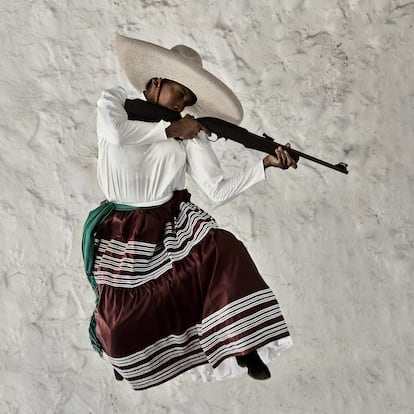
6.- 'Nosce Te Ipsum: Membrum Fantasma', by Ayana V. Jackson. National Museum of Anthropology, until August 31.
With the Latin title Nosce Te Ipsum (Know Thyself), the gallery of powerful self-portraits , several previously unpublished, by American photographer Ayana V. Jackson (New Jersey, 1977), is announced. One of whose images also features on the festival poster. This is the first time that the National Museum of Anthropology, which is celebrating its 150th anniversary, has joined PHotoEspaña, and the first exhibition by this artist in Europe. Jackson works with her body to break the stereotypes of nineteenth-century colonial prints, from the perspective of sex, race, and social position. She does so in a museum that is currently undergoing a process of reforming its messages and pieces to support the controversial decolonization brought about by the Minister of Culture.
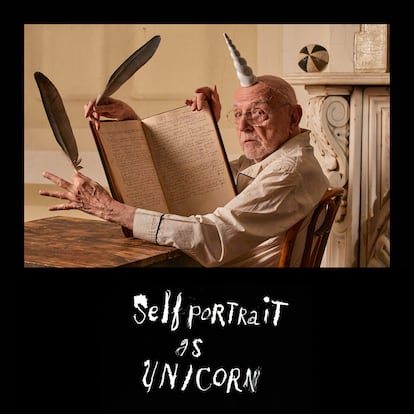
7.- 'The Photographer of the Invisible', by Duane Michals. Canal Foundation, until August 24.
A good example of experimental and conceptual photography is this exhibition by Duane Michals , a 93-year-old American photographer who rose to prominence in the 1970s. This is a retrospective featuring 51 works, including 150 images. The latest are from this year by this figure of contemporary photography, whose images are poetic, reflective, and emotional. "When you look at my photographs, you're looking at my thoughts," he says. There are also portraits of artists such as Duchamp, Magritte, and Warhol, as well as humorous self-portraits.
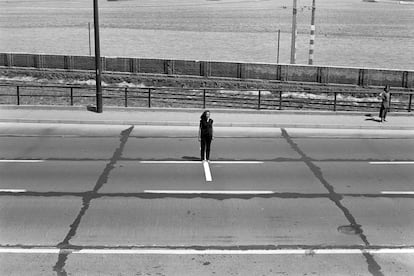
8.- 'By Pass. The Border of the Sign', by Lotty Rosenfeld. Círculo de Bellas Artes, until September 7.
Chilean video artist Lotty Rosenfeld, who passed away in 2020, used photography and video installation as weapons of protest to launch her artistic career, which began in the 1960s. This exhibition highlights images, from her country and from different cities around the world, in which Rosenfeld intervened in the broken lines of roads, transforming them into crosses with white stripes. This was her way of drawing attention to the Pinochet dictatorship, and later for other reasons. Her last intervention was in Madrid, in front of the Puerta de Alcalá, in 2018.
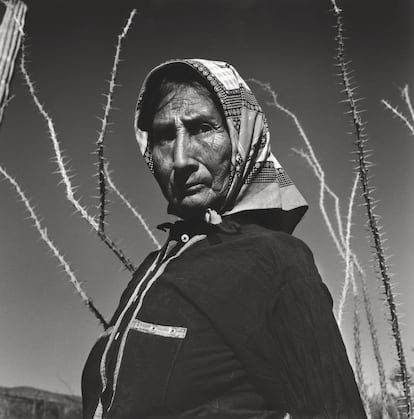
9. "When the Light Speaks," by Graciela Iturbide. Casa de México Foundation in Spain, from June 19 to September 14
Although these images are familiar to photography lovers, now that Mexican artist Graciela Iturbide has been honored, less than a month ago, with the Princess of Asturias Award for the Arts, it's a good opportunity to take a look at her extraordinary work. Iturbide, who abhors the term "magical realism" for her work, offers an anthropological perspective, somewhere between the poetic and the documentary, in which she has portrayed Mexican social reality, especially that of its indigenous people. These include her most representative images, such as Our Lady of the Iguanas, those from Frida Kahlo's Bath series, and her haunting self-portraits.
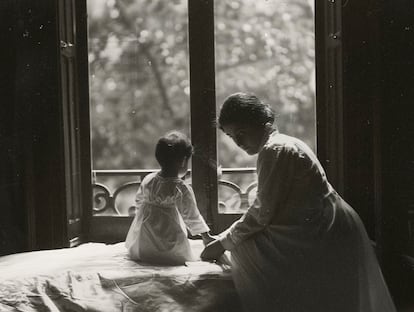
10.- 'Adelaida', by Mercedes Hausmann and Jorge Salgado. Museum of Romanticism, Madrid, until September 14.
To conclude these 10 recommendations, a debate arises regarding the uses of generative artificial intelligence in photography. Regarding her private collection, photographer Mercedes Hausmann, together with photographer Jorge Salgado, have recreated the life of the bourgeois lady Adelaida Martínez-Corera, the former's great-great-grandmother, with images generated by AI. "A trip to the past," according to the authors, which has allowed them to add characters, humorous situations... They have created 600 images, of which they have chosen 48 for the exhibition , which are mixed with the 17 real ones. Hausmann and Salgado are not playing a guessing game, because the photos that do not have labels, they warn, are those created by AI. It is an exhibition conceived ad hoc for the temporary exhibition hall of a museum as special as the Museum of Romanticism.
Also pay attention to Suggestions from Italy , a group exhibition at the Istituto Italiano di Cultura di Madrid, until September 13. A trip to Italy in the second half of the 20th century, with photographs by artists such as Luigi Ghirri, Ferdinando Scianna, and Gabriele Basilico.
Collages. Learning in Disobedience , by Isabel Coixet, at the Museo Nacional Thyssen-Bornemisza, until September 14. Photocollage fantasies by film director Isabel Coixet, a format she has been working with for years. A selection curated by Estrella de Diego.
And outside Madrid ... Santander: A New History , by Isabel Muñoz, at the Altamira National Museum and Research Center, until October 26; Mirabilia , by Joan Fontcuberta, at the Naves de Gamazo, until January 18, 2027. Barcelona : Edward Weston , at the KBr Photography Center, until August 31.
EL PAÍS





